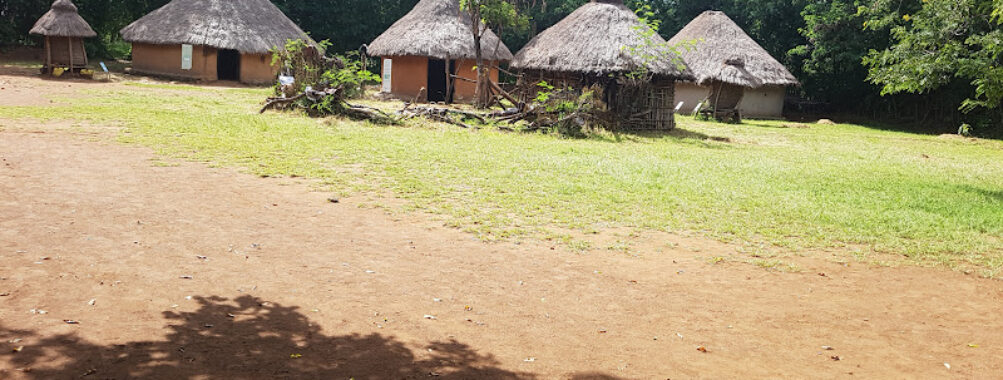
Kisumu Museum
“`html
Table of Contents
Description
The Kisumu Museum, tucked into the leafy Milimani Estate along the Kisumu–Kericho highway, feels like a pocket of calm in the middle of a bustling lakeside city. Opened in 1980, it was built with the idea of preserving both the cultural traditions of western Kenya and the natural heritage of Lake Victoria’s ecosystem. Over the years, it has grown into a space where history, science, and everyday life collide in a way that’s both educational and surprisingly personal. It isn’t a massive, high-tech museum with endless halls, but that’s part of its charm. It’s approachable, intimate, and easy to explore without feeling overwhelmed.
Visitors often describe it as a bit eclectic, and honestly, that’s true. One moment you’re staring at ancient tools and artifacts that tell the story of Kenya’s communities, and the next you’re peering into a snake park or watching crocodiles bask in the sun. There’s even a small aquarium that gives you a glimpse into the aquatic life of Lake Victoria. And then, just when you think you’ve seen everything, you stumble upon a life-size traditional Luo homestead, complete with huts arranged in the cultural order that reflects family and social structures. It’s the kind of detail that makes you pause and think about how deeply culture is tied to daily living.
The museum strikes a balance between being informative and being a bit quirky. Some exhibits are polished and well-curated, while others feel slightly dated, but that mix adds a layer of authenticity. It’s not trying to be flashy—it’s trying to tell stories. And if you’re the kind of traveler who enjoys digging beneath the surface of a place, you’ll probably appreciate it. The grounds are also surprisingly green and spacious, giving you room to wander, sit under a tree, or just take a break from the city noise. Families with kids often find it a stress-free stop, thanks to the open spaces, live animal enclosures, and the fact that the museum is generally not overcrowded.
Accessibility is another plus. The museum has wheelchair-friendly entrances, restrooms, and parking, which makes it welcoming for all kinds of travelers. There’s also a small restaurant on-site, so you don’t have to rush through your visit if hunger kicks in. While not every traveler walks away blown away, it’s clear that the majority leave with a sense of appreciation. The Kisumu Museum may not be perfect, but it’s honest, and that honesty is what makes it worth a stop if you’re exploring western Kenya.
Key Features
- Life-size traditional Luo homestead showcasing cultural architecture and family structures
- Snake park and crocodile enclosures for wildlife enthusiasts
- Small aquarium highlighting species from Lake Victoria
- Anthropological and archaeological exhibits tracing Kenya’s history
- Spacious 10-acre compound with shaded green areas
- On-site restaurant and clean restrooms
- Wheelchair accessible entrances, restrooms, and parking
- Child-friendly environment with open spaces and engaging displays
- Occasional live performances and cultural demonstrations
- Free parking available within the compound
Best Time to Visit
Kisumu’s climate is generally warm year-round, but the best time to explore the museum is during the drier months between December and March, or again from June to September. These months make it easier to enjoy the outdoor sections like the Luo homestead and the animal enclosures without worrying about sudden downpours. Mornings are often cooler and less crowded, so if you want to take your time wandering through the exhibits or snapping photos without too many people around, aim to arrive early in the day. Weekdays also tend to be quieter compared to weekends when families and school groups are more likely to visit.
How to Get There
The museum sits conveniently along the Kisumu–Kericho highway in Milimani Estate, making it easily accessible whether you’re coming from the city center or driving in from further afield. From Kisumu’s CBD, it’s just a short drive—usually less than 10 minutes depending on traffic. Public transport options like boda bodas (motorbike taxis) and tuk-tuks are plentiful in Kisumu and can drop you right at the gate, though if you’re not used to them, a taxi or ride-hailing service might feel more comfortable. For those driving, the museum provides free parking, which is a small but welcome perk in a city where parking can sometimes be a headache.
Tips for Visiting
First off, give yourself at least two hours to explore without rushing. While the museum isn’t huge, the mix of indoor and outdoor exhibits deserves time to soak in. Bring a hat, sunscreen, and maybe even a bottle of water if you’re planning to spend time in the outdoor sections—it can get pretty hot under the midday sun. Comfortable shoes are a must because you’ll be walking between pavilions and through the homestead village.
If you’re traveling with kids, the museum is a safe and engaging stop, but keep an eye on younger ones around the snake and crocodile enclosures. Photography is usually allowed, and the Luo homestead makes for some great cultural shots, but it’s always polite to confirm at the entrance. And here’s a personal tip: don’t skip the restaurant. It’s not fine dining, but grabbing a bite or a cold drink on-site makes the visit feel more relaxed.
Lastly, approach the museum with an open mind. Some exhibits might not be as polished as what you’d find in Nairobi or Mombasa, but that’s part of its character. Think of it less as a polished gallery and more as a living classroom where culture, history, and nature are all stitched together. If you do that, you’ll walk away not just with photos, but with a deeper sense of what life along Lake Victoria has looked like—past and present.
“`
Location
Places to Stay Near Kisumu Museum
Find and Book a Tour
Explore More Travel Guides
No reviews found! Be the first to review!